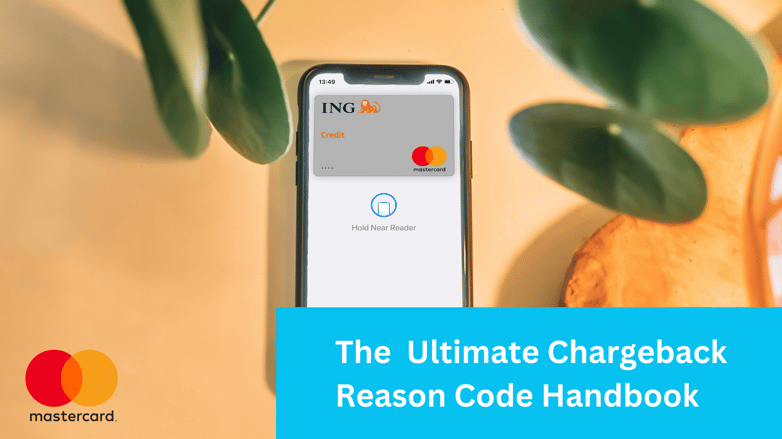
Understanding, Disputing, and Preventing Chargebacks: Mastercard Reason Code 4837
By Tressa Downing on Aug 13, 2024 7:48:13 AM
Amidst several critical business elements, merchants must prioritize understanding chargeback reason codes to effectively navigate the intricacies of running a successful business. The need for this becomes even more pressing with the increasing prevalence of online banking and the ease of filing chargebacks. Nevertheless, this concept remains elusive for many due to the complexity associated with chargeback reason codes.
Typically, banks categorize chargebacks into specific reasons and allocate corresponding codes to each case so merchants can understand the reason for a chargeback. The designated reason doesn’t always reflect the actual scenario; as such, merchants are still meant to respond to the reason code, even if they suspect cardholders are lodging an erroneous claim.
Well, what makes these reason codes so confusing is the lack of consistency across the creditcard issuing banks. Further each credit card company has its list of reason codes, with distinct numbering conventions, time constraints, rules, and limiters. The best option is to learn the basics of these codes. As such, we’ll begin a blog series on chargeback reason codes, starting with MasterCard’s 4837 chargeback.
4837 Chargeback: No Cardholder Authorization
Chargeback reason code 4837, or the “No Cardholder Authorization,” is relevant when customers claim a card transaction was unauthorized but feel the issue can’t be resolved through the merchant. Under such circumstances, the card issuing bank, might permit customers to file a chargeback to reverse the transaction. In this case the customer was using a MasterCard. If it was a Visa for example, the chargeback reason code would be different.
The “No Cardholder Authorization” can apply to several situations involving unauthorized transactions, all involving the cardholder asserting that the transaction resulted without authorization. This makes code 4837 one of the categories for fraud-related chargebacks.
Reason code 4837 is sometimes accompanied by a member message text that tells the merchant the chargeback type based on the claim. This message helps merchants understand the chargeback and potentially dispute the specific claim attached to this code.
Possible Causes for a 4837 Chargeback
The root cause of a 4837 chargeback can stem from three scenarios:
- Merchant error
- No authorization or real fraud
- Friendly fraud
While it might seem unlikely, it’s possible this could result from a merchant’s error, particularly when proper authorization procedures are not followed. However, a more probable scenario involves fraudsters attempting to use lost or stolen cards or engage in card takeover, resulting in a true fraud chargeback under this reason code. Merchants who accept card purchases from customers without valid authorization are liable for this chargeback.
Another prevalent scenario involves friendly fraud chargeback. Another prevalent scenario involves friendly fraud chargeback. Friendly fraud, is when a cardholder disputes a transaction on their creditcard statement that they or someone else in their household may have made, does not seek a refund from the merchant (known as first party abuse) or unintentionally failed to recognize a charge on their bank statement and mistakenly dispute it.
When cardholders report any perceived unauthorized transaction, card issuers review the transaction and validate the customer’s claim. Subsequently, they must initiate a chargeback with a “no cardholder authorization” reason code within 120 days of the transaction.
However, it’s worth noting that the designated reason may be completely different from the actual reason. Customers might initiate a claim due to buyer’s remorse in certain instances or because they feel filing a chargeback is a simpler alternative to the merchant's return process. Regardless of the circumstance, claiming an unauthorized transaction can be a convenient pretext for initiating a chargeback without a valid reason.
Disputing Code 4837
While it may seem unfair to merchants, those with accurate documentation to support their case can contest these invalid claims through the MasterCard Representment Process. Such documentation could be a signed delivery confirmation, records showing the cardholder downloaded or used a digital purchase, or evidence showing the chargeback does not comply with Mastercard’s rules.
In truth, the evidence required to contest an invalid claim depends on the type of transaction, and determining the appropriate evidence for each type can be challenging. In this case, you should get expert help. Here are common transaction types for code 4837.
- Chargebacks with the “CNP Airline Transaction” modifier
- Chargebacks with the “Customer Profile”
- Chargebacks with the “Digital Goods Download” modifier
- Chargebacks with the “eCommerce Transaction: Partial Shipment or Balance Due” modifier
- Chargebacks with the “Recurring Transaction” modifier
- Chargebacks with the “Site to Store” modifier
- Instances where merchants have already processed a refund for the disputed transaction
- Instances where merchants already resolved the issue directly with the cardholder.
Preventing Mastercard Reason Code 4837
It’s one thing to contest code 4837; it’s another to prevent these chargebacks proactively. Typically, merchants prevent code 4837 chargebacks by utilizing recognizable billing descriptions and effective fraud prevention tools. Here are some proactive measures to help avoid “no cardholder authorization” issues.
- Implement fraud prevention tools like Mastercard SecureCode, CVC2, and Address Verification Service (AVS)
- Make billing descriptions easy to recognize
- Follow proper authorization procedures for every transaction
- Use EMV-enabled payment terminals
- Always verify cardholders using any appropriate identification method.
- Reject expired cards
- Provide staff training on correct transaction processing, authorization protocols, and strategies for addressing issues with payment terminals.
It’s better to take more proactive steps when it comes to chargeback management, and with these steps, merchants can prevent legitimate chargeback claims. However, the post-transactional nature of friendly fraud makes it impossible to identify beforehand.
Nonetheless, MidMetrics™ provides an effective solution for merchants to reduce 4837 chargebacks and friendly fraud. Our chargeback management software helps you navigate dispute processes and reduce fraudulent activities. Explore MidMetrics™ today!
Conclusion
Reason Code 4837 chargebacks can be a complex and frustrating experience for merchants, but identifying the causes, representment process, and prevention strategies can help mitigate the risks. Furthermore, understanding the potential scenarios that lead to this chargeback can help merchants take proactive measures to prevent unauthorized claims and protect themselves against financial losses.
As we said earlier, merchants can also significantly benefit from the effectiveness of chargeback management software. Don’t let chargebacks affect your business – take control of your transactions and secure your payment ecosystem with chargeback knowledge and comprehensive solutions like MidMetrics™.
Glossary
AVS (Address Verification Service): A fraud prevention tool used to verify the cardholder's billing address with the address on file with the card issuer.
EMV (Europay, Mastercard, and Visa): It’s a global standard for chip-based debit and credit cards, helping to prevent card-present fraud. EMV-compliant terminals can process EMV chips on debit and credit cards.
CVC (Card Verification Code 2): A three-digit code printed on the back of a credit or debit card, usually in a separate box to the right of the signature strip. It’s used to verify the card's authenticity and prevent fraudulent transactions.
Representment: The process of disputing a chargeback and presenting evidence to the card issue or the acquiring bank to reverse the chargeback and return the funds to the merchant.


